Some days ago I decided to install an APRS RX-only iGate here in my apartment. The iGate simply takes the APRS signals from the air and forward them to the internet. I live almost in the center of the city and I have a free sight over the buildings. Good preconditions for a „fill-in“ iGate I thought. In this project I learned more on designing HF-filter than on Linux and Raspbian, what actually was my aim at the beginning of this project.
On Silvio's website I found a manual (German manual, english manual) on how to use an Raspberry Pi and a cheap RTL-SDR dongle (DVB-T stick) for this purpose. Sounds like an easy job. After I had everything set up (thank you Silvio, DM9KS) I received nothing within the next 12 hours. I knew that something must be wrong. I live in the capital city (Saarbrücken, Germany) of my state with a population of about 200k, so there should be some APRS signals in the air.
I googled a bit and found out, that those 10 bucks RTL-SDR dongles have a wide-open frond end with no filters in it. I had no clue what to filter out, so for me the most logical thing was to look for a 2m bandpass-filter. I wanted the APRS frequency – which is 144.800 Mhz here in Europe – to pass the filter and everything else should be attenuated. So far so good.
I called my friend Peter, DC2ZO who is an telecommunications engineer. I asked him if he can help me to develop a 2m bandpass-filter. He had one already made in his stock and only a bit later I had the filter in my hand. I had to fine-tune the filter for 144.800 Mhz, which I did with my network analyzer, having Peter on the phone answering all my questions. After some time I had the filter set to 144.800 Mhz with 0.8db of insertion loss and 20db attenuation on everything else. I was happy that I tuned my first filter (built by Peter, DC2ZO) and inserted the 20db bandpass-filter between the antenna and the RTL-SDR. After some time, I did not receive any packets.

I knew that I had two very strong 100kw (!) radio transmitter just in a line-of-sight. They transmit 101,7 Mhz (Radio Salü) and 103,7 Mhz (UnserDing) from „Sender Riegelsberg-Schoksberg“, so I knew I have to take them out. But how? I called Peter again and he told me about the ¼ wavelength coax-notch filter (also called „stub-filter“). I googled a bit and found a very nice calculator for the coax-filter and also a short manual on how to solder coax-t-connections if you don't have any T-adaptors on hand.
My iGate was running during the night, and I went to work with my APRS tracker on. I received nothing with my 20db bandpass-filter, so I started just after work to make the notch-filter to take 101,7 Mhz out.

After some tests with the 101,7 Mhz filter I still received nothing, even with a 59db attenuation for this frequency.

Peter was pretty sure that there must be some something else with big power in my area. I set up the spectrum analyzer and found 2 big peaks besides the 101,7 Mhz radio station. It was 178.352 MHz (DAB+ 5C) and 202.928 Mhz (DAB+ 9A), both pushing another 50kw each from the same tower as 101,7 Mhz.

Peter suggested to make 2 additonal coax-filters and solder them to the existing one for 101,7 Mhz. I did the (kind of messy) soldering, remember I had no T-connectors on hand and set up the network analyzer again.
After slowly cutting piece by piece I tuned the second stub for maximum attenuation on 178.352 Mhz and then I tuned the third stub for maximum attenuation on 202.928 Mhz. Surprisingly this worked and the 101,7 Mhz stub was still good. I had 33db-35db attenuation so far whithout the 2m bandpass-filter in line.

After this I had to re-tune the 2m bandpass-filter, which I added in series again. The analyzer showed 12db loss, that was far to high for the APRS signals. I was able to tune the filter for a 4db loss on 144.800 Mhz and a attenuation of 50.16 db on 101,7 Mhz, 58.38 db on 178,35 Mhz and 49.32 db on 202,92 Mhz.
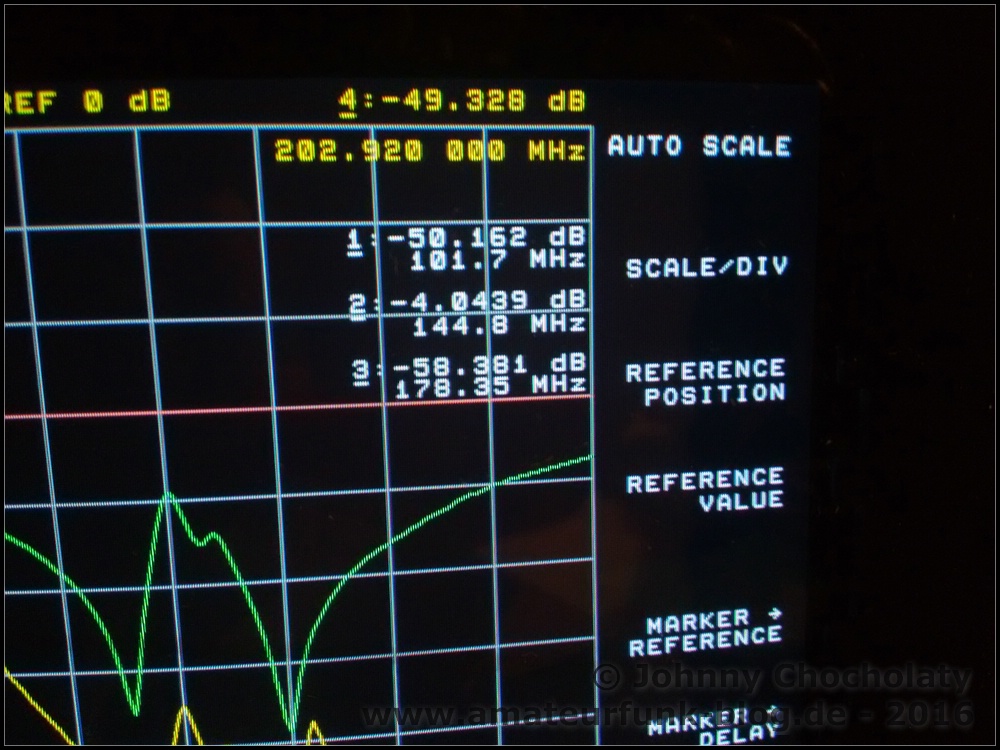
I went to bed and the next day I received my first APRS packets which came from DC0VZ who passed my iGate from about 6km distance.

I later tested this myself and it works pretty good so fa:
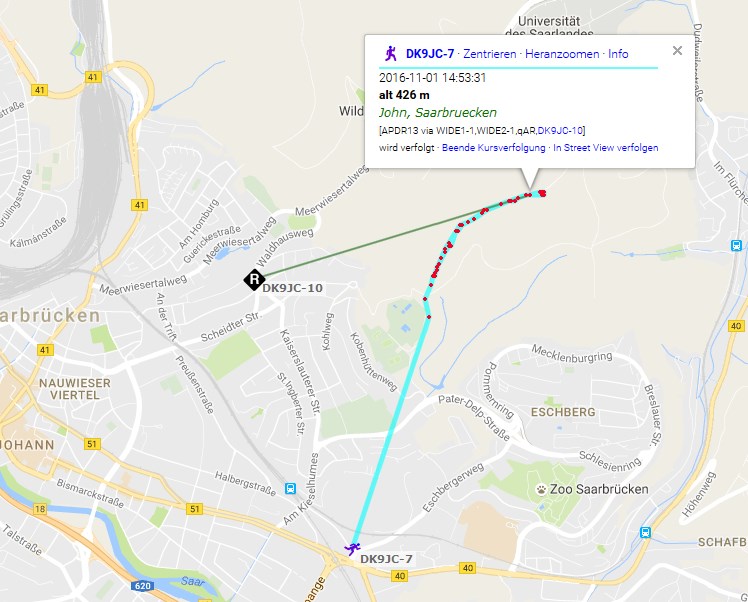
Thank you Silvio, DM9KS for the idea and Peter, DC2ZO for answering so many questions and also for the 2m bandpass-filter.
Update 03.11.2016: If you do not have a network analyzer to tune the coax-stubs, use the calculator which I linked above only. If you use the exact length, you will be very close to the frequency you like to attenuate. That should help in most cases.

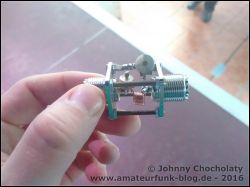
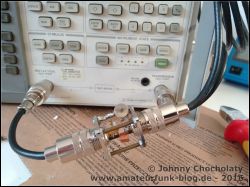

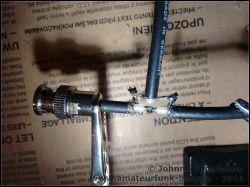

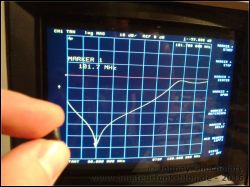


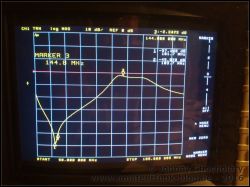

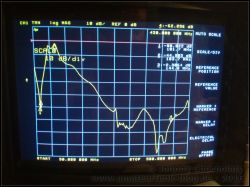
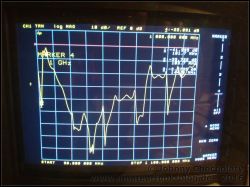

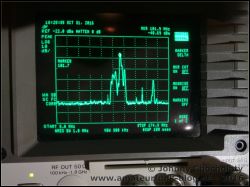

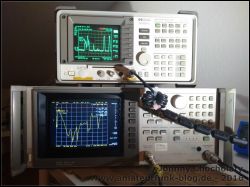
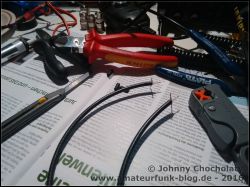
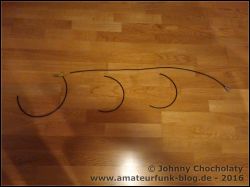


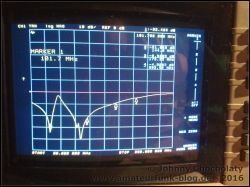

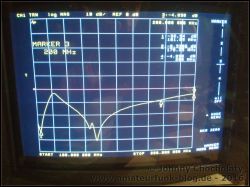
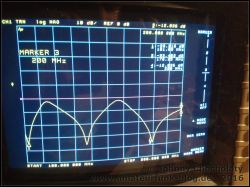


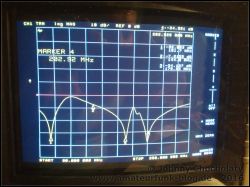
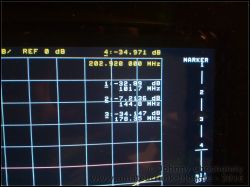

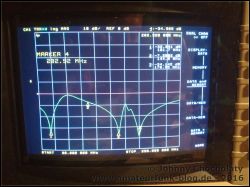
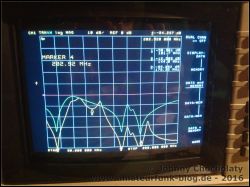


Guten Abend lieber OM. Ich benötige Bandpässe für meinen SDR den ich betreibe. Wäre es möglich das Du mich hierbei unterstützt??
Gruss aus Nürnberg DO3JZ